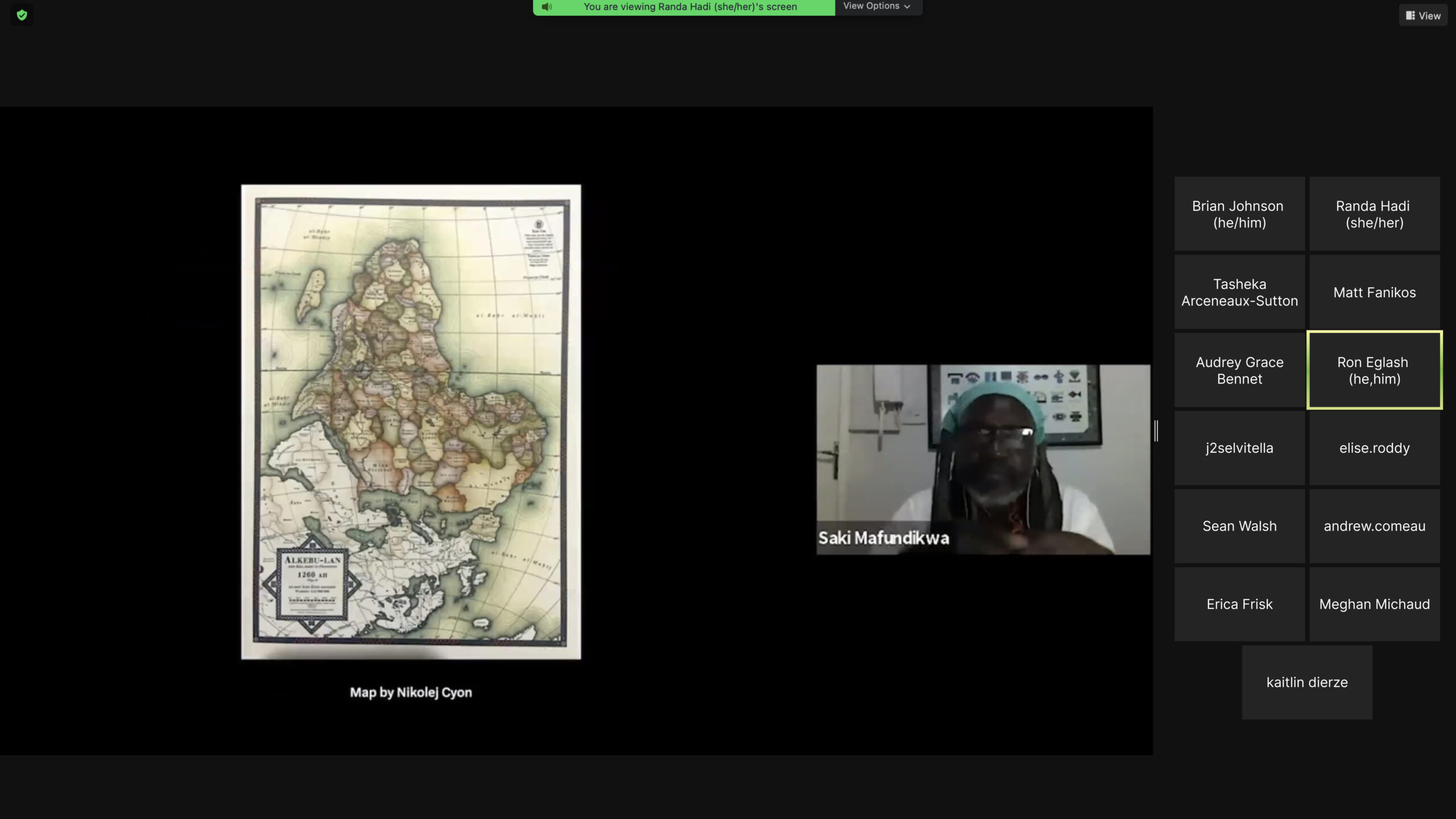Workshop Facilitators:
- Silas Munro, Polymode, BIPOC Design History Co-Author
- Brian Johnson, Polymode, BIPOC Design History Producer
- Audrey Bennett, University of Michigan, BIPOC Design History Lecturer
BIPOC Design History Educators:
- Randa Hadi, Polymode, University of Tampa
- Tasheka Arceneaux-Sutton, NC State, BIPOC Design History Co-Author
- Ron Eglash, University of Michigan, BIPOC Design History Special Guest

Over the course of two days, BIPOC Design History facilitators and educators gathered with the Andover Public Schools K-12 Fine Art Faculty for Professional Development to discuss ways the school system can diversify their projects, activities, and modules into their courses.
The first module tackled African Visual Languages: Architecture, Alphabets, and Craft, while the second module dealt with Entertainment, Culture, and Music. The modules used in this workshop were built from the Black Design in America: African Americans and the African Diaspora in Graphic Design course.
After each module was presented, each faculty member shared their ideas on incorporating the materials into their classes. Through discussions, planning, and mapping the group collectively brainstormed suggestions on how elements from the Black Design in America course could be brought into the classroom.

There were three main questions that everyone came back to as a way to ensure that everyone who was in the workshop was grounding their work in these critical questions.
- How do we center BIPOC voices and artists in the classroom?
- What additional context, history, or artists help support and expand the lesson or unit?
- How do we teach diverse voices in a predominantly white student body? Cultural appropriation?
By creating a safe and vulnerable space, faculty members were able to express their fears around saying the wrong thing, responding to artists of color’s work, and how to critically engage with questions they might not know the answer to. While some of these questions are hard to answer, vulnerability with students is important.
The Andover faculty left the workshop with a database of resources that included readings, podcasts, lectures, and music to help them think through various ways of integrating diverse voices and materials into their classroom.
